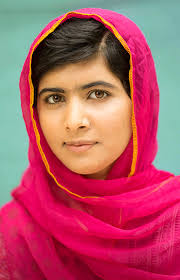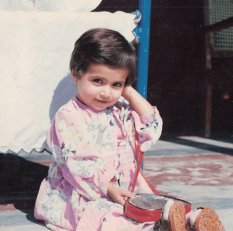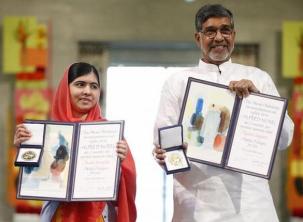
Memoir of Malala Yousafzai
“Stand up. Stand now”
A quality education, free from terror and cruelty, is every girl’s right. Malala Yousafzai, became an advocate for education and women’s rights in Pakistan before she reached her teens, and is still acting as a Pakistani education activist, fighting for the rights of every girl to receive an education. In my opinion, no task is too small for this inspiring teen. Yousafzai interests me, as she believes “leaders must invest in books instead of bullets” (Westall 2016). There are four concepts which will be discussed throughout this memoir, in relation to Yousafzai’s rise to fame. Globalisation, which is the shrinking between the information provider and the receiver. This was an influencing force for Yousafzai’s voice and message to be heard, as the reaching of a global audience remains essential. Another concept, media convergence, was crucial for Yousafzai, as it influenced her message to be accessed through the advancement of trans media, and technological convergence. Yousafzai contributes to the concept of the public sphere by communicating with individuals to freely discuss societal problems, in order to generate action around the globe. The fourth concept is the fourth estate, which Yousafzai does not contribute to, as she is not in the profession of journalism. Yousafzai, conversely uses globalisation, the public sphere and media convergence effectively to advocate rights for girls’ and education, now and into the future.
Malala Yousafzai, was born on the 12th of July 1997, in Mingora, a town north-west of Pakistan in the Swat District (Fund,2016). Yousafzai attended ‘Khushal Girls High School and College’, that her father, Ziauddin Yousafzai, owned and ran in the Swat. Determined to follow in her father’s footsteps, Yousafzai started forming her online identity.

Media convergence is the integration of mass communication outlets- Television, Portable and interactive technology and internet through various digital media platforms. Yousafzai’s resilient stand on global concerns has been influenced by the concept of media convergence. Communication outlets have progressively changed the way Yousafzai spreads her opinion on education. In 2009, in response to the increase in the Taliban’s military hold on Swat, Yousafzai began writing a blog for BBC Urdu ‘Diary of a Pakistani Girl’, under a pseudonym, about fears of her school being attacked. Around the time of an influx with Taliban military, she was featured in a documentary for New York Times, which revealed her as the author of the BBC blog. Along with the evolving world of media and its users, the converging of mass media exposed Yousafzai’s blog, triggering a substantial following.
In 2011, Yousafzai was nominated by Archbishop Desmond Tutu for the International Children’s Peace Prize, and received Pakistan’s first National Youth Peace Prize. In response to her popularity rising and national recognition, Taliban leaders voted to kill her. One year later, on October 9th 2012, Yousafzai was shot by a masked gunman. A single bullet penetrated and tore through her head, neck and shoulder. Yousafzai survived the initial attack but remained in a critical condition. Forthwith, she was flown to the United Kingdom for treatment in a hospital, specialising in military injuries. Until January, 2013, by which she had been joined by her family, on her release from hospital.

Yousafzai proclaimed, “If all women in developing countries finished high school, deaths of children under 5 would fall by 49%” (Fund 2016). Globally advocating education rights has made Yousafzai become an international sensation, as is evident in her appearances on global television shows, such as The Ellen DeGeneres Show, ABC News, and Channel 4 News. Yousafzai’s position globally has enabled her to speak with the U.S. President, Barack Obama, about ‘drone attacks fuelling terrorism’ (Kumar 2016).
Her prominent position within the media, coupled with her success, which facilitated her to assist with international charities and educational programs for Kenya, Pakistan, Sierra Leone, and Nigeria. The influence of globalisation on her rise to fame was particularly evident when she started the ‘Malala Fund’, with their goal “to enable girls to complete 12 years of safe, quality education so that they can achieve their potential and be positive change-makers in their families and communities” (Fund 2016). Yousafzai’s fund also works with partners around the world, helping to “empower girls and amplify their voices; [by] invest[ing] in local education leaders and programs; and advocate[s] for more resources for education and safe school for every child” (Fund 2016). The ‘Malala Fund’ contains a 12- month social action and advocacy campaign ‘Stand #withMalala’, accompanying the release of the film ‘He Named Me Malala’. This campaign is aiming to raise mass global awareness, funding, and policy change, by motivating millions of people as newfound champions for girls’ education. In addition to online media platforms, film, and television, Yousafzai has released a book globally called ‘I Am Malala: The Girl Who Stood Up for Education and Was Shot by the Taliban’. Due to the process of globalisation, Yousafzai has established a professional profile across countless media platforms, allowing her to connect with the public, in order to communicate on preventable issues and initiate political action.
There has been controversy surrounding war, and inequality towards education worldwide. There are many children who have suffered prosecution, which inspired them to fight for a noble cause, such as Anne Frank, a German diarist and writer, who ‘is one of the most discussed Jewish victims of the Holocaust,'(Stergeron, 2016). Yousafzai, however, was unique, and received political backing from the Pakistani governments, as, globally, governments sought a strong anti-terrorism statement for the issues and current concerns in media around the world. Yousafzai, with her strong message and substantial social media following globally, proved to be a suitable figure for such a role.
Malala Yousafzai interests me, as she is an articulate and fierce advocate for education, rights and social justice. Her father, Ziauddin, stated, “I think Malala is an average girl, but there’s something extraordinary about her” (Shamsie 2013). Yousafzai’s bravery resulted in her becoming the youngest ever Nobel Peace Laureate, and she became a co-recipient of the Nobel Peace Prize in 2014. She “accepted the prize on behalf of the world’s children, and she will continue to work for education until every child can go to school” (Fund 2016). As a result of winning the Nobel Peace Prize, and $1.1 million dollars in prize money, Yousafzai was able to contribute to the financing of a school for Syrian refugee girls.
Yousafzai was given a platform by previous and current governments to form the public perception of anti-terrorism actions and stances, Yousafzai’s rise to fame became an opportunity for political publicity. Surviving terrorism, and being a teenage activist of education for young girls, made her a marketable image. She was a flawless candidate for political agendas, and was given assistance to increase her popularity throughout the worldwide media. ‘The Malala Fund’ website creates public discussion through raising awareness and taking action, with options to ‘raise your voice’ through various campaigns, or ‘making a difference’ through donating or fundraising (Fund 2016). Yousafzai’s use of social media accounts, across various platforms such as Facebook, has generated discussion between the public and herself. The public sphere has assisted Yousafzai, in spreading the importance of education and creating change for the future.
In contrast, Yousafzai does not contribute to the concept of the fourth estate, as she doesn’t publish work to the press. Yousafzai, may go into the profession of journalism as a means of spreading her message to the fourth estate. However, being successful and effective with conveying her message throughout the media today, she has no purpose extending to the press.
Yousafzai’s career has evolved, along with the constant change of media and social media platforms. Reservations have been made about Yousafzai’s success in portraying her message, if media wasn’t accessible. ’Diary of a Pakistani Girl’, fluctuated her to the limelight, by utilizing online media as a means of entering the global stage. Yousafzai knew that with publishing online to the ‘public there was potential for negative consequences’ (Tahir 2012). Her existence is dedicated to speaking out about what is morally right, but without the influence of media convergence and globalisation, she would not have been heard. Additionally, her contribution to the public sphere has enabled her to communicate with others to progress a cause of action. Without technology and media’s influence, Yousafzai’s rise to fame would not have occurred, and her message would not have been received. Yousafzai continues to utilize the three of four concepts discussed, and continues to successfully fight for education rights on a global scale.
Mikaila Norman
References
Images
Images, G 2016, accessed April 1, 2016, from https://www.google.com.au/imgres?imgurl=http://t3.gstatic.com/images%3Fq%3Dtbn:ANd9GcSriAGSgDgv_16GquyRmx2Jro63FAwp4V8jlI9NpaX6Cjjpt_-N&imgrefurl=http://t3.gstatic.com/images%3Fq%3Dtbn:ANd9GcSriAGSgDgv_16GquyRmx2Jro63FAwp4V8jlI9NpaX6Cjjpt_-N&h=999&w=666&tbnid=V8ogcy__3EKFBM:&tbnh=160&tbnw=106&docid=R5erXkJKiEEnwM&itg=1&usg=__b_fo6hi9_RIWJVs8qZEM6_SCWbo=.
Malala Yousafzai 2016, accessed April 1, 2016, from <(https://www.pinterest.com/explore/malala-yousafzai/)>.
Websites
Fund, T 2016, ‘The Malala Fund’, Malala.org, accessed March 31, 2016, from <https://www.malala.org/malalas-story>.
Gunelius, S 2014, ‘The Data Explosion in 2014 Minute by Minute – Infographic’, ACI, accessed March 31, 2016, from <http://aci.info/2014/07/12/the-data-explosion-in-2014-minute-by-minute-infographic/.>.
Kumar, A 2016, ‘Nobel Prize winner Malala told Obama U.S. drone attacks fuel terrorism’, mcclatchydc, accessed March 31, 2016, from <http://www.mcclatchydc.com/news/politics-government/article24774460.html>.
Reed, D, Haroon, J & Ryan, P 2016, ‘Technologies and Policies to Connect the Next Five Billion’, Scholarship.law.berkeley.edu, accessed March 31, 2016, from <http://scholarship.law.berkeley.edu/cgi/viewcontent.cgi?article=2048&context=btlj>.
Sanghani, R 2014, ‘Why the world loves Malala Yousafzai’, Telegraph.co.uk, accessed March 31, 2016, from <http://www.telegraph.co.uk/women/womens-life/11153808/Malala-Yousafzai-why-the-world-loves-her.html>.
Shamsie, K 2013, ‘Malala Yousafzai: ‘It’s hard to kill. Maybe that’s why his hand was shaking’, the Guardian, accessed March 31, 2016, from <http://www.theguardian.com/world/2013/oct/07/malala-yousafzai-hard-to-kill-taliban>.
Staff, T 2015, ‘The 30 Most Influential Teens of 2015’, TIME.com, accessed March 31, 2016, from <http://time.com/4081618/most-influential-teens-2015/>.
Stergeron, 2016, ‘Annelies Frank Memorial Website (1929-1945)’, Ilasting.com, accessed March 31, 2016, from <http://www.ilasting.com/annefrank.php>.
Tahir, M 2012, ‘Reading Malala’s Diary | Tanqeed’, Tanqeed.org, accessed April 1, 2016, from <http://www.tanqeed.org/2012/11/reading-malalas-diary/>.
Westall, S 2016, ‘Nobel winner Malala opens school for Syrian refugees’, Reuters, accessed March 31, 2016, from <http://www.reuters.com/article/us-lebanon-malala-idUSKCN0PM0L520150713 .>.
What a truely amazing and inspirational young women…. such an inner strength to young women and men around the world.
LikeLiked by 1 person